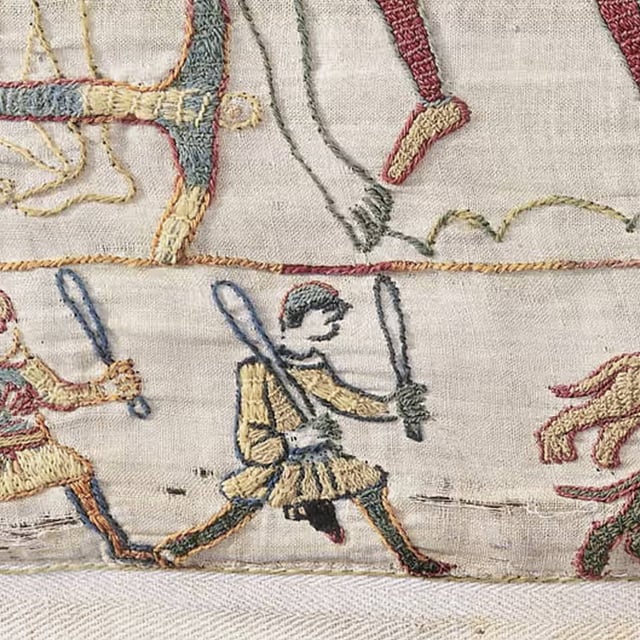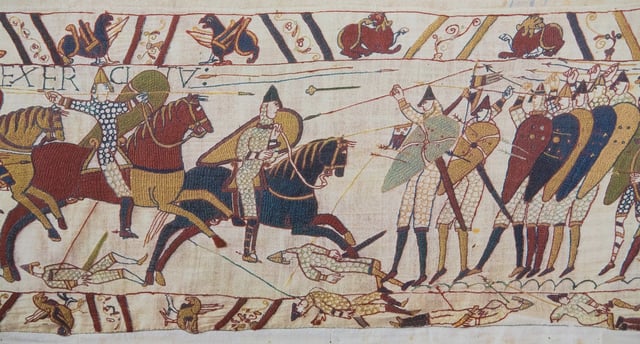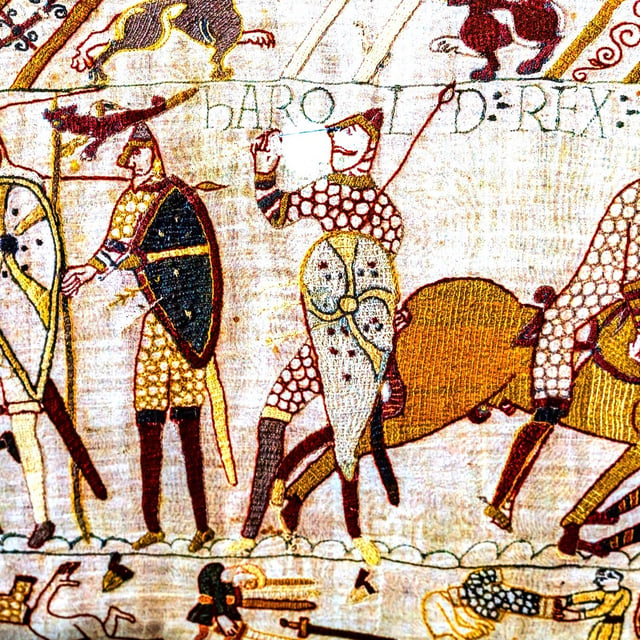Overview
- The Bayeux Tapestry, an 11th-century artifact commemorating the Norman Conquest, is at the center of a scholarly dispute over genital imagery.
- Dr. Christopher Monk recently claimed on the HistoryExtra Podcast to have identified a 94th penis in the tapestry's border, challenging Professor George Garnett's 2018 count of 93.
- The contested detail, found beneath a running man's tunic, is interpreted by Monk as male genitalia, while Garnett argues it represents a sword scabbard with a brass tip.
- Experts, including podcast host Dr. David Musgrove, emphasize the tapestry's multilayered nature and its capacity to provide insights into medieval perspectives on power and virility.
- The Bayeux Museum describes the tapestry as both an epic poem and a moralistic work, with its explicit imagery continuing to intrigue scholars nearly a millennium after its creation.



